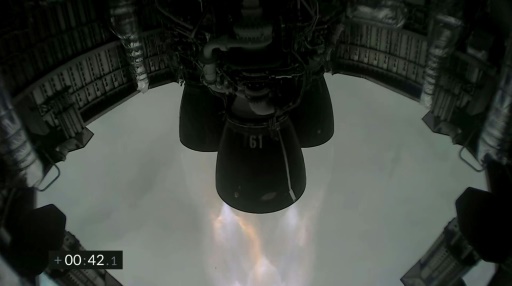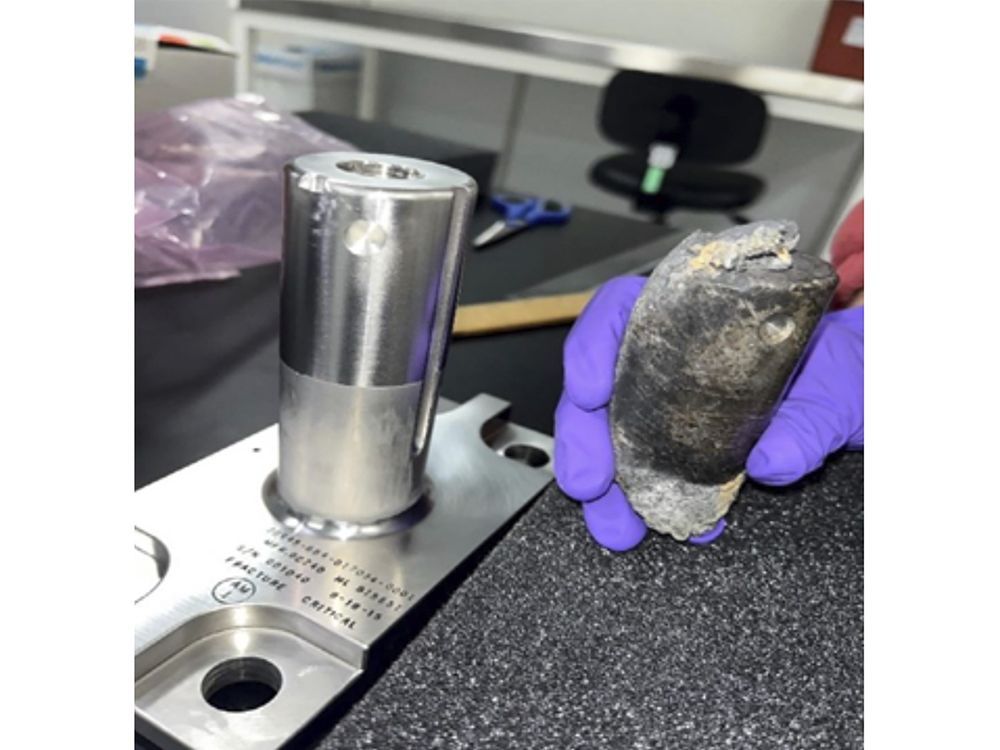Science
Musk says first orbital flight for moon rocket scheduled for early 2022 – Japan Today


Elon Musk says the Starship developed by his company SpaceX and selected by NASA for the Americans’ return to the moon would attempt its first orbital flight early next year.
“We’ll do a bunch of tests in December and hopefully launch in January,” Musk said Wednesday in a talk for the National Academies Space Studies Board.
“There’s a lot of risk associated with this first launch,” he said. “So I would not say that it is likely to be successful, but I think we will make a lot of progress.”
Starship has already made several sub-orbital flights. After multiple tests that ended in impressive explosions, SpaceX finally succeeded in landing the spacecraft, which is designed to be reusable.
For the upcoming orbital test, it will be decked out with an ultra-powerful first stage dubbed Super Heavy.
Authorization from the U.S. Federal Aviation Administration is expected “around the end of the year,” Musk said.
The billionaire entrepreneur — who also founded electric carmaker Tesla — said he hoped to have completed the launch pad and launch tower this month, before carrying out a series of checks.
After the proposed January test launch, he aims for a dozen additional launches or more through the end of 2022.
He said Starship would be operational to transport loads outside the framework of tests “in 2023.”
U.S. space agency NASA is betting on Starship to become the lander used as part of its Artemis program to take humans back to the moon, in 2025 at the earliest.
But the SpaceX chief has even bigger dreams for this “biggest rocket ever designed.”
“What we’re aiming to develop with starship is a generalized means of transporting large amounts of mass or people… anywhere in the solar system,” he said.
In his hour-long speech broadcast live on YouTube, the founder of SpaceX hammered home his ambitious vision: “In order for life to become multi-planetary, we’ll need maybe 1,000 ships.”
The overarching goal of SpaceX “has been to advance space technology such that humanity can become a multi-planetary species and ultimately a spacefaring civilization,” he said.
“Long term it’s essential for preserving the light of consciousness,” because, he said, ultimately something will happen to Earth, either a natural or man-made disaster, to end civilization on the planet.
© 2021 AFP
Science
SFU researchers say ant pheromones could help prevent tick bites – Global News
New research from Simon Fraser University reveals ants could be a solution to prevent tick bites.
In a media release Monday, the university said researchers found that ticks would avoid ants and the area they were in. Even once the ants would leave the area, ticks would still not go to where the ants previously were.
“They could see that there were ants and basically go, ‘I’m not going to go there because there may be ants there or there may be ants there again soon,” said Claire Gooding, the lead author of the study.
The research was published recently in the journal Royal Society Open Science.

Gooding said the team researched ants as a potential solution because the insects work in large groups and use chemicals to communicate.
“They are social insects and use a huge range of pheromones to communicate with one another,” Gooding said.
After discovering the effectiveness of ant pheromones, the team worked with a synthetic chemist and was able to “recreate a synthetic version” of the pheromones.

This synthetic ant pheromone was also successful in repelling ticks.
“There’s quite a big risk of tick encounters in the summer,” said Gooding. “People often encounter them on the sides of trails.”
The study suggests hikers could consider using ant pheromones as a repellent to scare off ticks.
They have a patent application in process for the repellant chemicals they developed.
There are three species of ticks that commonly bite humans. In some cases, if bites are not treated quickly enough, they can prove fatal.
More on Science and Tech
© 2024 Global News, a division of Corus Entertainment Inc.
Science
NASA is seeking a faster, cheaper way to bring Mars samples to Earth – CityNews Toronto


CAPE CANAVERAL, Fla. (AP) — NASA’s plan to bring samples from Mars back to Earth is on hold until there’s a faster, cheaper way, space agency officials said Monday.
Retrieving Mars soil and rocks has been on NASA’s to-do list for decades, but the date kept moving forward, as costs ballooned. A recent independent review put the total cost at $8 billion to $11 billion, with an arrival date of 2040, about a decade later than advertised.
NASA Administrator Bill Nelson said that’s too much and too late. He’s asking private industry and the space agency’s centers to come up with other options to revamp the project. With NASA facing across-the-board budget cuts, he wants to avoid gutting other science projects to finance the Mars sample project.
“We want to get every new and fresh idea that we can,” he said at a news conference.
NASA’s rover Perseverance already has gathered 24 core samples in tubes since landing in 2021 at Mars’ Jezero Crater, an ancient river delta. The goal is more than 30 samples to scour for possible signs of ancient Martian life.
The space agency wants to get at least some of the collected samples to Earth sometime in the 2030s for no more than the $7 billion. That would require a spacecraft that goes to Mars to get the tubes and launches off the planet. Then it must rendezvous with yet another spacecraft that would bring the samples to Earth.
NASA’s science mission chief, Nicky Fox, refused to speculate at the news conference when the samples might arrive at Earth, given a new program and timeline, or even how many samples might be returned. That information will be included in any proposals, she said.
“We’ve never launched from another planet, and that’s actually what makes Mars sample return such a challenging and interesting mission,” Fox said.
Scientists are eager to analyze pristine samples from Mars in their own labs, far superior to the kind of rudimentary testing done by spacecraft at the red planet. It will take such in-depth testing to confirm any evidence of microscopic life dating back billions of years when water flowed on the planet, according to NASA.
The samples will help NASA decide where astronauts go on Mars in the 2040s, Nelson said.
NASA’s Jet Propulsion Laboratory in Pasadena, California, had been in charge of the sample project. It was hit by hundreds of layoffs earlier this year due to all the budget cutbacks. Nelson is seeking ideas from across the space agency, with the revamped program more spread out.
NASA hopes to receive any ideas by late fall.
___
The Associated Press Health and Science Department receives support from the Howard Hughes Medical Institute’s Science and Educational Media Group. The AP is solely responsible for all content.
Marcia Dunn, The Associated Press
Science
NASA confirms mystery object that crashed through roof of Florida home came from space station – Toronto Sun


Article content
NAPLES, Fla. (AP) — NASA confirmed Monday that a mystery object that crashed through the roof of a Florida home last month was a chunk of space junk from equipment discarded at the International Space Station.
Article content
The cylindrical object that tore through the home in Naples on March 8 was subsequently taken to the Kennedy Space Center in Cape Canaveral for analysis.
Article content
The space agency said it was a metal support used to mount old batteries on a cargo pallet for disposal. The pallet was jettisoned from the space station in 2021, and the load was expected to eventually fully burn up on entry into Earth’s atmosphere, but one piece survived.
The chunk of metal weighed 1.6 pounds (0.7 kilograms) and was 4 inches (10 centimetres) tall and roughly 1 1/2 inches (4 centimetres) wide.
Homeowner Alejandro Otero told television station WINK at the time that he was on vacation when his son told him what had happened. Otero came home early to check on the house, finding the object had ripped through his ceiling and torn up the flooring.
“I was shaking. I was completely in disbelief. What are the chances of something landing on my house with such force to cause so much damage,” Otero said. “I’m super grateful that nobody got hurt.”
Share this article in your social network
-
Media24 hours ago
DJT Stock Plunges After Trump Media Files to Issue Shares
-
Business23 hours ago
FFAW, ASP Pleased With Resumption of Crab Fishery – VOCM
-
Media23 hours ago
Marjorie Taylor Greene won’t say what happened to her Trump Media stock
-
Business24 hours ago
Javier Blas 10 Things Oil Traders Need to Know About Iran's Attack on Israel – OilPrice.com
-



 Politics23 hours ago
Politics23 hours agoIn cutting out politics, A24 movie 'Civil War' fails viewers – Los Angeles Times
-
Media14 hours ago
Trump Media plunges amid plan to issue more shares. It's lost $7 billion in value since its peak. – CBS News
-
Business22 hours ago
Tesla May Be Headed For Massive Layoffs As Woes Mount: Reports – InsideEVs
-
Media22 hours ago
Trump Media stock slides again to bring it nearly 60% below its peak as euphoria fades – National Post







